
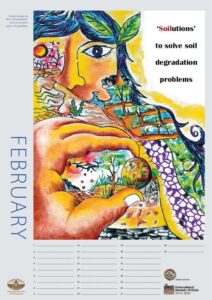
Download the IUSS Soilutions Calender (59MB)
IUSS News
IUSS Presidential Elections 2022 – Call for nominations
The election of the next President of the IUSS is due this year. The appointment of the President represents a total of six years commitment to the Union by serving two years each as President-Elect (2023/24), President (2025/26) and Past-President (2027/28).
The Standing Committee on Presidential Elections has defined the respective procedure and the guidelines. Nominations should be made by two accomplished, highly-respected senior soil scientists.
Full nomination documentation should be submitted electronically to Prof. Dr. Rainer Horn (Email: rhorn@soils.uni-kiel.de) by May 31, 2022. A copy should also be sent to iuss@umweltbundesamt.at.
Procedure and guidelines: https://www.iuss.org/about-the-iuss/iuss-presidential-election/
IUSS Stimulus Fund – reminder
IUSS has established an annual Stimulus Fund to support suitable activities within its Commissions and Working Groups. Where appropriate, the Fund will also support other activities to assist the development of soil science generally but particularly in regions of the world where lack of resources limit opportunities. Applications should be sent to iuss@umweltbundesamt.at. The initial application process requires a short written proposal of no more than 500 words plus a budget indicating how the funds awarded are to be spent. The normal maximum award will be USD 2,500.
Deadline for submissions: 15 March 2022
Read more: https://www.iuss.org/index.php?article_id=594
ICoSM 2022 Young Micromorphologist Awards
We postponed the date for submission of documents to the ICoSM 2022 Young Micromorphologist Awards. New deadline is 31 March 2022.
We encourage all young people dealing with soil micromorphology to submit their documents.
We also ask all who are interested in attending the conference to register at http://www.icosm2020.sggw.pl/registration/ (the registrations from 2020 are cancelled, and all who registered to the conference in 2020 are asked to do this once again).
Read more: http://www.icosm2020.sggw.pl/scholarships/
Final Call for Abstracts at the International Clay Conference in İstanbul, Thematic Session 05: Soil minerals in connection with pedogenic processes
The 17th International Clay Conference (ICC 2022) will be held in İstanbul, Turkey, on July 25-29, 2022. Please consider submitting an abstract to Thematic Session 05:
https://dekongroup.com/iccthematicsessions/files/downloads/TS-05.pdf
The deadline for ICC 2022 abstract submissions is February 28, 2022.
Please use the following link for an abstract template of your submission: https://icc.aipea.org/wp-content/uploads/sites/3/2021/10/ICC-Abstract.pdf
Abstracts can be submitted using this link: https://icc.aipea.org/abstracts/
News from national soil science societies
British Society of Soil Science
Webinar Zoom into Soil: Soils in Scotland
As we look ahead to the World Congress of Soil Science 2022 in Glasgow Dr Allan Lilly, a Senior Soil Scientist at The James Hutton Institute, presented ‘The Soils of Scotland: An Overview’ in the webinar on February, 2, 2022. With this in mind, Allan provided an overview of Scottish soils, their diversity and some of the factors that contribute to the diverse range of soils found within the Scottish landscape.
Ben Butler, a Digital Soil Mineralogist at the James Hutton Institute, presented ‘The Mineralogy of Scottish Soils’. The many properties and functions that soils provide for life on land are inherently linked to their mineralogy. Accurately identifying and quantifying soil mineral compositions therefore provides a wealth of information that can be used to better understand and manage soil systems amidst the great demands placed upon them. Scottish soils are particularly diverse in mineralogy due to the assortment of parent materials that feature across the nation, in combination with the variation in soil forming factors that act upon them. In his presentation, Ben introduced the minerals that can be found in Scottish soils, their approximate spatial variation, and how these minerals affect soil properties. He discussed some ways in which soil mineral data can be collected and analysed quantitatively using open-source, computational approaches.
The recording of the event is available on the British Society of Soil Science (BSSS) YouTube channel:
Highlights from the national soil science societies 2021/2022
In order to celebrate the 200th edition of the IUSS Alert we have asked the national soil science societies to share one main highlight from 2021 or 2022 with the international soil science community. Below you will find what is at the heart of national soil science activities.
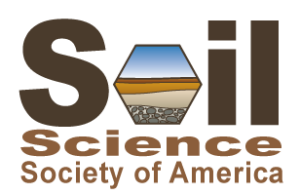
Soil Science Society of America
In summer 2022, the Soil Science Society of America together with the American Society of Agronomy and Crop Science Society of America are launching a brand-new educational platform about carbon and ecosystem service markets. This science-based, impartial educational platform will provide producers, conservationists, certified crop advisers, and certified professional soil scientists with bite-sized, multimedia educational materials. By closing the knowledge gap with science-based insights, ASA, CSSA, and SSSA can help growers make better decisions and accelerate climate-smart agriculture. Keep your eyes peeled for the official launch in the summer of 2022!
Read more: www.soils.org

Austrian Soil Science Society
In addition to the yearly scientific congress and respective excursions, the ASSS hosts the Austrian Soil Forum twice a year, where soil experts from science and public administration discuss current problems and developments regarding soil protection and soil health. Furthermore, the ASSS organizes the soil film day to show and discuss current films regarding soil. As an inherent part of the yearly species protection days at Schönbrunn Zoo, the ASSS presents soil topics to the interested public. Similarly, the ASSS organizes soil workshops for pupils and students in schools.
Read more: https://www.oebg.org/en/
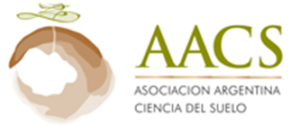
Argentine Association of Soil Science
Since 1959, the most important work of the Association are the Argentine Congresses of Soil Science. This year (2022) the XXVIII Argentine Congress of Soil Science will be held in the Autonomous City of Buenos Aires in November, inviting distinguished colleagues to participate in it. Read more: www.congreso2022.suelos.org.ar
In 1983 the Association has begun to publish the scientific magazine Ciencia del Suelo in Spanish, indexed, with free and open access (http://www.suelos.org.ar/sitio/publicaciones/revista-ciencia-del-suelo/)
The website created in 2002 provides up to date information on soils www.suelos.org.ar with presence in all social networks. Since 2018 it has the digital magazine Nuestro Suelo. The objective is to disseminate knowledge generated in our country on the soil and conservation (http://www.suelos.org.ar/sitio/publicaciones/revista-nuestro-suelo/)
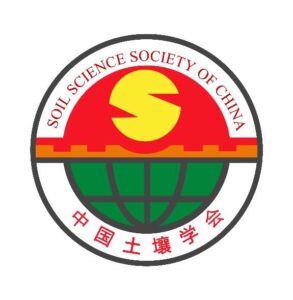
Soil Science Society of China
The Soil Science Society of China (SSSC) signed a strategic cooperation framework with the Soil Science Society of America in 2021. The SSSC launches its first Newsletter (in English) on the 8th World Soil Day. It is a window for Chinese soil scientists to present the latest progress and a link to connect with global researchers.
In 2022, the 10th International Symposium on Forest Soils (ISFS 2022) will be held in October in Hangzhou, China. Conference of the 20th Chinese young soil scientists and the 15th Chinese young plant nutrition and fertilizer scientists will be held in May in Yan’an, China.
Read more: http://www.csss.org.cn/en/
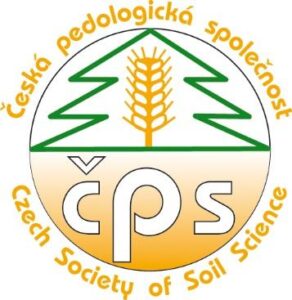
Czech Society of Soil Science
The Czech Society of Soil Science currently has 138 members. In the years 2021-22, we focused on the publication of Soil – An Overlooked Treasure, which is intended for high school students and other interested parties, and was distributed in e-form with the help of the Ministry of Education. During the coronavirus pandemic, the regular conference was not held in 2021; we are now preparing a joint conference with Societas pedologica slovaca for 2022. We will also be co-organizers of the Central European ISTRO conference. Within cooperation with ministries and EU bodies, we have advised on materials in the field of soil protection.
Read more: https://pedologie.czu.cz
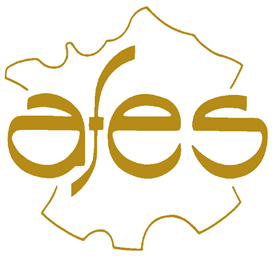
Association Française pour l’Étude du Sol
French Association for the Study of Soil
Highlights from 2021 and for 2022 include: Étude et Gestion des Sols (EGS): Peer reviewed open access scientific journal, 20 papers, including a special issue ‘Soil biodiversity’; Webinars: 53 scientific conferences on line (2021); PromoSolEduc: Promoting soil in education, initiated in 2020; Co-foundation with the SECS (Spain) of the Pyrenean Alliance of Soils (AsPyr), cross-border consortium (GSP’s global alliances); 15th Journées d’Étude des Sols, June 21-25, the French congress; AFES invited presentation, Serbian congress of Soil Science, September 23; World Soil Day: Seminars and conferences, December 2-7 2021 (Toulouse 2022). Demolon: Travel grants call launched for 2022; Seven new webinars for 2022.
Read more: https://www.afes.fr/

Hungarian Soil Science Society
The Hungarian Soil Science Society is looking forward to get back to normal, preCOVID-19 activity soon. Our most important forum, the biennial travelling conference was basically virtual in 2020 in Sárvár, Western Hungary, but we look forward to a physical meeting this year in Hódmezővásárhely, Southern Hungary. We are currently busy with a soil science promotion project. Another great topic for 2022 is participation in the Glasgow Congress where we expect large Hungarian delegation. The national soil journal Agrokémia és Talajtan prepares an English language volume dedicated to the event and we support the preparation for the soil judging contest.
Read more: http://talaj.hu/
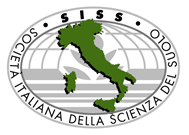
Italian Soil Science Society
In 2022 the Italian Soil Science Society (ISSS) celebrates its 70th anniversary and organizes the 44th National Congress entitled “Soil in the Ecological Transition for Sustainable Development” in Rome 5-7 October 2022. Since ISSS is the organizer of the International Congress for the IUSS Centennial, this relevant event is being announced within the framework of international congresses and workshops on soil science such as the GLOSOLAN (FAO) network, the 22nd World Congress of Soil Science (Glasgow) and the EGU (Vienna). ISSS is active in promoting Soil Science awareness at all educational levels, starting from primary school.
Read more: https://scienzadelsuolo.org/
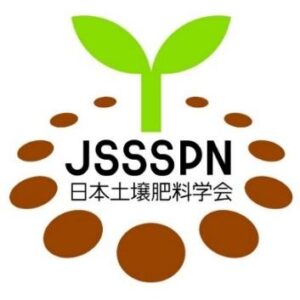
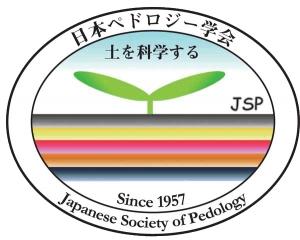
Japanese Society of Soil Science and Plant Nutrition and Japanese Society of Pedology
In 2021 the Japanese Society of Soil Science and Plant Nutrition (JSSSPN) and the Japanese Society of Pedology (JSP) have jointly published “The Soils of Japan” as a part of the World Soils Book Series by Springer. 165 Japanese soil scientists contributed to the publication. We try to translate it to widely educate new Japanese generations. To look back the 10 years after the Fukushima Daiichi Nuclear Power Plant accident, JSSSPN opened a symposium for the reconstruction of agriculture at Fukushima. We will further internationalize through cooperation with IUSS and East and Southeast Asia Federation of Soil Science Societies (ESAFS).
Website JSSSPN: http://jssspn.jp/Eng/index_eng.html
Website JSP: http://pedology.jp/

Korean Society of Soil Science and Fertilizers
KSSSF will host the 8th International Symposium on Soil Organic Matter (SOM2022) on 26-30 June in Seoul, Korea. The theme of the conference – “Soil Organic Matter in the Anthropocene” focuses on novel applications of contemporary analytical, mathematical, and theoretical approaches to advance our understanding of SOM dynamics, storage and sequestration, whilst maintaining other critical ecosystem services including climate regulation and food security. For more information and online abstract submission, please visit our conference website at https://www.som2022.org/.
Read more: https://ksssf.org
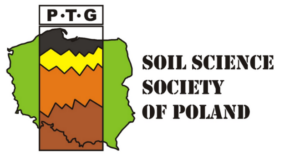
Soil Science Society of Poland
The pandemic has changed the World and activity of research community. The activity of the Soil Science Society of Poland has switched from live and field meetings to on-line meetings. We participated and co-organized conferences such as: “Brunic Arenosols in Poland-genesis, properties, ecological and economic importance”, “Soil Classification & Education”, “Saline Soils in Poland-scientific, ecological, and functional importance”, and “International Conference on Soil Science”. The soil of the 2021 in Poland was Brunic Arenosol. The 2022 is dedicated to Alluvial soils. We are working on establishing an award for young researchers for the best thesis or article. Furthermore, the intensive work is underway for organization the 31st Congress of the Soil Science Society of Poland in 2023 (“Soil in a Changing World”).
Read more: http://ptg.sggw.pl/
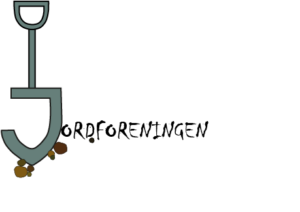
Norwegian Soil Science Society
The Norwegian Soil Science Society (http://www.jordforeningen.no/) launched a new initiative called ‘Soil chats’, a popular science video podcast where young soil scientists are interviewed and present their background and current work (in Norwegian only). Topics include soil health, biochar, fish sludge, and soil C. In connection with one of these, we also made a video recording of a PhD trial lecture (in English) featuring biochar specialist Adam O’Toole, presenting a 45 min talk on ‘Management induced effects on soil health, with a focus on soil biota’. This is freely available at: https://vimeo.com/663175427 and well worth watching. Enjoy!
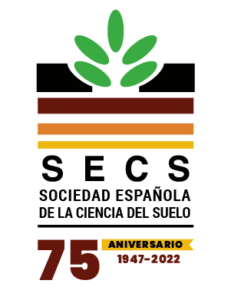
Spanish Soil Science Society
This year the Spanish Soil Science Society (SECS) turns 75 and to commemorate this anniversary, more special activities and events will be organized. Among them, the inauguration of the Soil Science Documentation Center in Spain (Ce.SECS) in the University of Santiago de Compostela, the participation of a SECS team in the International Soil Judging Contest in Glasgow (UK) within the framework of the 22nd World Congress of Soil Science and the celebration of the IX Iberian Congress of Soil Science (CICS2022: https://events.iniav.pt/cics2022) in Lisbon (Portugal) co-organized with the Portuguese Society of Soil Science.
Read more: https://www.secs.com.es/
General News
Agriculture ministers reach consensus to protect and use soils sustainably
On 28 January 2022, 68 agriculture ministers from around the world attended the Global Forum for Food and Agriculture (GFFA) – an international conference that is held each year in Berlin – to discuss agri-food policy issues. The topic of this year was ‘Sustainable Land Use: Food Security Starts with the Soil’.
The IUSS had the honour of organising the first expert panel of the Global Forum for Food and Agriculture (GFFA). The panel was entitled ‘Global perspectives on sustainable soil management towards food security’ and was held on Monday, 24 January 2022, from 5:00 to 6:00 p.m. (CET), with a subsequent deep dive from 6:00 to 6:30 p.m. The panel was moderated by Dr. Edoardo A.C. Costantini, Senior Researcher, CNR- Institute of Bioeconomy, Florence, Italy and President Elect of the International Union of Soil Sciences.
Read more: https://www.gffa-berlin.de/en/fachpodien_2022/iuss/#1607953699546-3e4d32c4-96e2
Communiqué: Food Security Starts with the Soil
By agreeing to abide by the contents of the communiqué – which is the first of its kind – 68 ministers successfully set ambitious targets and demonstrated dedication to ramp up efforts to stem soil degradation. Some of the key points include:
- Soils must be protected;
- Progress must be made with climate change mitigation and climate adaptation;
- Soil biodiversity is vital for healthy soils. As global land resources are limited, they need to be managed sustainably;
- Fair (rights-based) access to agricultural land should be guaranteed;
- Investment, research, innovation and digitalisation can play a significant role in making the use of soils more sustainable;
- Resilient and sustainable food systems must be supported.
Read the communiqué: https://www.gffa-berlin.de/wp-content/uploads/2015/10/gffa-2022-kommunique-en.pdf
FAO press release: https://www.fao.org/newsroom/detail/agriculture-soils-degradation-FAO-GFFA-2022/en
[From Global Soil Partnership Special announcement No. 38, 4 February 2022]
ISC Call for LIRA reviewers
The ISC “Leading Integrated Research for Agenda 2030 in Africa (LIRA)” programme was launched in 2016 to foster scientific contributions from Africa to the implementation of the 2030 Agenda for Sustainable Development. With its conclusion in 2021, the ISC is now seeking nominations for team members of an evaluation group to prepare a review of the LIRA programme.
We invite ISC Members and your networks to nominate candidates with experience in undertaking project evaluation to be considered for the review group by 22 March 2022.
Read more: https://council.science/current/news/call-evaluation-lira2030/
Journal of Plant Nutrition and Soil Science celebrates its 100th anniversary
In 2022 the Journal of Plant Nutrition and Soil Science celebrates its 100th anniversary. Founded in 1922, JPNSS is probably the oldest journal still publishing in this field worldwide. It is one of the cooperating journals of IUSS. On the occasion of the journal’s Centenary Year 2022, a selected number of invited papers authored by recognized scientists in their fields has been published open access (see https://onlinelibrary.wiley.com/toc/15222624/2022/185/1).
Among the invited papers, there is a viewpoint of Edoardo A.C. Costantini (president elect of the IUSS) and Stefano Mocali (vice-chair Centennial of Division 2) about soil health, soil genetic horizons and biodiversity.
The article emphasizes the importance of a holistic approach to the evaluation and monitoring of soil health, which considers both the functional biodiversity of the soil and the nature of the genetic horizons of the entire profile. Although biological activity is often concentrated in the surface horizon, there is ample evidence that deep soil horizons host relevant biological communities, governed by soil conditions usually different from those found in topsoil. The processes responsible for the formation of the genetic horizons of the soil produce characteristics that select the presence of organisms. The authors conclude that the loss of the natural self-organization of genetic horizons is therefore a form of degradation of soil health.
Reference: Edoardo A.C. Costantini, Stefano Mocali (2022). Soil health, soil genetic horizons and biodiversity. J. Plant Nutr. Soil Sci.2022; 185:24–34. https://doi.org/10.1002/jpln.202100437
Update on the FEBR Soil Data Repository
A new version of the FEBR (Free Brazilian Repository for Open Soil Data) package for R environment is available the Comprehensive R Archive Network (CRAN). The package makes access to the Free Brazilian Repository for Open Soil Data (FEBR) as easy as possible. You can also access the package via Github and check all the new features and bug fixes of the latest release version in the NEWS file .
Developing a high-resolution land use/land cover map by upgrading CORINE’s agricultural components using detailed national and pan-European datasets
The agricultural uses of the Coordination of Information on the Environment Land Cover (CLC) dataset suffer from limitations such as temporal stationarity, low spatial resolution, broad and rather simplified grouping of classes. The study attempts to address these shortcomings, using as test site the Sperchios River catchment, Central Greece. The Greek ‘branch’ of the Land Parcel Identification System, Beneficiaries’ Declarations (BD) and CLC inventories were utilized to develop hybrid layers, deriving from their harmonization, sequential incorporation and progressive update (BD → BD-ilot → BD-ilot-CLC). The final layer constitutes the new object-oriented Land Use/Land Cover map. Remote sensing data (Sentinel-2) was used to validate the accuracy of the BD, subject to the most frequent errors. The new map retains the key advantages of CLC yet is now characterized by highly detailed spatial resolution and the explicit description of the different cultivated farmlands included.
Global soil organic carbon stocks in natural and urban ecosystems
Despite efforts to mitigate climate change, it still remains challenging for humans to reduce carbon emissions and meet carbon neutrality under the pressure of increasing global population and urbanization. In terrestrial environments, soil is the largest organic carbon sink and offers the greatest opportunity to mitigate the global carbon imbalance. Soil organic carbon (SOC) stocks originate from detritus and root exudates.
In this study, a meta-analysis was conducted by collecting SOC data from published literature. Each study location was defined as a natural, urban green space, or urban intensive habitat and compared those carbon stocks within defined climatic zones, vegetation types, and the Human Footprint (a unitless metric reflecting the extent of human disturbance) in each study location.
[From GSBI Newsletter – February 2022]
New EU Online Soil Biodiversity Course
The JRC Soil Team developed a new online course on soil biodiversity, available on the EU academy platform: Soil, a burst of life: the hidden world beneath our feet. It aims at raising awareness and increasing knowledge of the secret life beneath our feet. It also allows you to familiarise with European Union initiatives for soil (biodiversity) protection. The target audience is science teachers, high school students and the general public.
Read more: https://academy.europa.eu/courses/soil-a-burst-of-life-the-hidden-world-beneath-our-feet
[From GSBI Newsletter – February 2022]
Phosphorus plant removal
In a recent publication, we estimated the Phosphorus (P) removal from agricultural lands of EU and UK (ca. 173 million ha). This takes into account the P removed by crop harvesting and the plant residues. For P removed by crop harvesting, we used 7 major categories of crops and 37 crops in more than 220 regions of EU and UK. The total P removal was about 2.55 million tonnes (Mt) (± 0.23 Mt), with crop harvesting having the larger contribution (ca. 94%) compared to the crop residues removal. The mean P removal by crop harvesting is 14 kg ha-1 yr-1. Data are available.
Read more: https://esdac.jrc.ec.europa.eu/themes/phosphorus-budget-topsoils [From ESDAC Newsletter 138 (February 2022)]
Rainstorms erosivity indexes
Heavy rainstorms play a central role in the water soil erosion processes. In a recent publication, we provide the spatiotemporal distribution of more than 300,000 erosive events measured at 1181 locations as part of the Rainfall Erosivity Database at European Scale (REDES) database. Rainfall erosive events are statistically investigated through the Lorenz curve and derived coefficients such as the Gini coefficient (G). In Europe, on average 11% of all erosive events contribute to 50% of the total rainfall erosivity. Data (“Rainstorm erosivity indexes”) are available with all erosivity datasets
Read more: https://esdac.jrc.ec.europa.eu/content/rainfall-erosivity-european-union-and-switzerland
[From ESDAC Newsletter No 138 (February 2022)]
Conferences, Meetings and Workshops
Due to the Corona pandemic and ensuing travel restrictions many of the events planned for 2020 and 2021 had to be cancelled or postponed. For a current list of upcoming events, please consult the IUSS website: https://www.iuss.org/meetings-events/
2022
“GSBI Speaks” webinar: Soil Biodiversity and Sustainable Agriculture
February 28, 2022
Online, 8-9:30 am MT, 4-5:30 pm CET
Moderated by Johan Six (ETH Zürich), Speakers to be announced soon!
Registration: https://zoom.us/webinar/register/6216432144177/WN_VdDylcafRVyNzXAjU2nXsQ
2022 PRSSS AGM and Spring Workshop – Soil Security: Past, Present, Future
March 5, 2022
Virtual (Zoom), 9AM-3PM PST
Recent current events, such as increased forest fire severity and regional flooding, have influenced many discussions about the state of our soil security. The topic for our 2022 AGM is “Soil Security: Past, Present, Future.” Throughout the day, we will be diving into how past decisions have shaped current events, how current events are shaping future planning, and the different intersections of soil security.
3-Minute Thesis Competition
We are happy to announce a 3-minute thesis presentation in lieu of a student poster presentation during the PRSSS AGM + Spring workshop. Students are encouraged to share their research in a 3-min rapid presentation format. Presentations should be recorded and submitted prior to the AGM event. During the event, presenters will participate in a Q&A period.
- Letter of intent to submit pre-recorded submission video: Due @ registration
- 3-minute thesis presentation recording: due March 2nd
- Recording format: MP4 is preferable, but we can accommodate whatever format is available to you
Read more: https://www.prsss.ca/springworkshop/
ISRIC Spring School training
May 16-20, 2022
Wageningen, The Netherlands
Training 1) Digital Soil Mapping and 2) World Soils and their Assessment
Registration deadline: 1 March 2022
Website: https://www.isric.org/utilise/capacity-building/springschool/general
Soil Ecology Society Biennial Meeting
May 17-19, 2022
Pacific Northwest National Laboratory Richland, Washington (Hybrid).
Read more: https://pnnl.cventevents.com/event/dc937c69-712a-43b4-b0d1-1a79cf764723/summary
Workshop ‘Rural Landscapes, land suitability, excellence of agricultural production’
June 21-23, 2022
Palazzo Sersanti, Imola, Italy
In the light of the new opportunities offered by the Common Agricultural Policies the 2022 edition of the scientific and cultural days of Imola has the cultural objective to draw the attention of scholars, administrators, politicians, and civil society representatives on the importance of revaluing rurality inherent in agricultural and forest landscapes combining aesthetic vision with sustainable productivity placing priority attention to the vocation of land and to good agricultural practices to promote production chains based on sustainability criteria that can provide food of high quality.
Programme: https://www.iuss.org/media/rural_landscapes_2022_preliminary_programm.pdf
14th International Symposium Microelements in agriculture and in the environment
June 22-25, 2022
Wrocław, Poland
Scientific topics of the Symposium cover both the issues of micronutrient deficiencies and plant nutrition, as well as the wide range of problems related to biogeochemistry of trace elements in the environment, soil and plant contamination with potentially toxic trace elements, and related aspects of ecotoxicity, ecological risk, and remediation of polluted sites. The main conference language will be English.
Deadline for abstract submission: February 28, 2022
1st announcement: https://www.iuss.org/media/symposium_microelements_2022_announcement_i.pdf
Symposium website: https://www.mikroelementy.eu/en/
AIPEA – XVII International Clay Conference
July 25-29, 2022
Istanbul, Turkey
Hybrid event
Abstract submission deadline: February 28, 2022
Website: https://icc.aipea.org/
Download: https://www.iuss.org/media/letter_to_clay_and_soil_science_community_february_2_2022_final_9_.docx
4th International Conference on Hydropedology
August 23–26, 2022
Skukuza, South Africa
Deadline for abstract submission: March 1, 2022
Website: https://www.ufs.ac.za/conferences/conference/fourth-international-conference-on-hydropedology
11th international conference of the IUSS Working Group on Soils of Urban, Industrial, Traffic, Mining and Military Areas (WG SUITMA)
‘Soils in the food-water-energy-nexus’
September 5-9, 2022
Berlin, Germany
Call for abstracts until Feb. 28, 2022 to suitma2022@gmail.com
SUITMA 11 website: https://suitma11.org/
Download: https://www.iuss.org/media/abstract-form_suitma11.docx
For the complete list of upcoming events, please see the event calendar on the IUSS website: https://www.iuss.org/meetings-events/
New publications
The State of the World’s Land and Water Resources for Food and Agriculture – Systems at breaking point (SOLAW 2021)
Synthesis Report 2021.
Published by FAO in Rome, Italy in 2021, 82 pages, ISBN: 978-92-5-135327-1.
Satisfying the changing food habits and increased demand for food intensifies pressure on the world’s water, land and soil resources. However, agriculture bears great promise to alleviate these pressures and provide multiple opportunities to contribute to global goals. Sustainable agricultural practices lead to water saving, soil conservation, sustainable land management, conservation of natural resources, ecosystem and climate change benefits. Accomplishing this requires accurate information and a major change in how we manage these resources. It also requires complementing efforts from outside the natural resources management domain to maximize synergies and manage trade-offs.
The objective of SOLAW 2021 is to build awareness of the status of land and water resources, highlighting the risks, and informing on related opportunities and challenges, also underlining the essential contribution of appropriate policies, institutions and investments. Recent assessments, projections and scenarios from the international community show the continued and increasing depletion of land and water resources, loss of biodiversity, associated degradation and pollution, and scarcity in the primary natural resources.
Download link: https://www.fao.org/3/cb7654en/cb7654en.pdf
Read more: https://www.fao.org/documents/card/en/c/cb7654en
Data Science in Agriculture and Natural Resource Management
Edited by G. P. Obi ReddyMehul S. RavalJ. AdinarayanaSanjay Chaudhary. Published as part of the Studies in Big Data book series (SBD, volume 96) by Springer in 2022, XVIII, 316 pages, 13 b/w illustrations, 93 illustrations in colour, Hardcover ISBN 978-981-16-5846-4, Softcover ISBN 978-981-16-5849-5, eBook ISBN 978-981-16-5847-1, price hardcover EUR 164.99 , eBook EUR 117.69.
This book aims to address emerging challenges in the field of agriculture and natural resource management using the principles and applications of data science (DS). The book is organized in three sections, and it has fourteen chapters dealing with specialized areas. The chapters are written by experts sharing their experiences very lucidly through case studies, suitable illustrations and tables. The contents have been designed to fulfil the needs of geospatial, data science, agricultural, natural resources and environmental sciences of traditional universities, agricultural universities, technological universities, research institutes and academic colleges worldwide. It will help the planners, policymakers and extension scientists in planning and sustainable management of agriculture and natural resources. The authors believe that with its uniqueness the book is one of the important efforts in the contemporary cyber-physical systems.
Read more: https://link.springer.com/book/10.1007/978-981-16-5847-1#about
Urban Soils – Principles and Practice
Edited by Andrew W. Rate. Published in the series Progress in Soil Science by Springer in 2022, XII, 446 pages, 1 b/w illustration, hardcover ISBN 978-3-030-87315-8, softcover ISBN 978-3-030-87318-9, eBook ISBN 978-3-030-87316-5, price hardcover EUR 175.99, price eBook EUR 128.39.
Urbanisation of the world’s population is an increasing trend; in China, for example, the proportion of the population living in cities increased from 13% in 1950 to 45% in 2010 (World Bank data). Australia is one of the world’s top ten urbanised countries with population greater than ten million, with approximately 90% of its population living in cities, mainly along Australia’s coast. The most rapidly urbanising populations are currently in nations of the African continent. Soils in urban areas have multiple functions which are becoming more valued by urban communities: soils supply water, nutrients and physical support for urban plant and animal communities (parks, reserves, gardens), and are becoming increasingly valued for growing food.
This book is designed primarily as an educational text, presenting the importance of urban ecosystems and the impacts of global change. It examines pedogenesis of urban soils: natural materials affected by urban phenomena, and natural processes acting on urban materials, including an examination of different climatic zones. There is a focus on soils formed on landfill, reclaimed land, dredge spoils as well as soil-related changes in urban geomorphology
Read more: https://link.springer.com/book/10.1007/978-3-030-87316-5#about
Soil Organic Carbon and Feeding the Future
Basic Soil Processes
Edited By Rattan Lal. 1st edition published in the series Advances in Soil Sciences on December 30, 2021 by CRC Press, 338 pages, 31 Color & 62 B/W Illustrations, ISBN 9781032150673, price hardback GBP 150.00.
Soil organic matter (SOM) is a highly reactive constituent of the soil matrix because of its large surface area, high ion exchange capacity, enormous affinity for water due to hygroscopicity, and capacity to form organo-mineral complexes. It is an important source and sink of atmospheric CO2 and other greenhouse gases depending on climate, land use, soil and crop management, and a wide range of abiotic and biotic factors, including the human dimensions of socioeconomic and political factors. Agroecosystems are among important controls of the global carbon cycle with a strong impact on anthropogenic or abrupt climate change.
This volume explains pedological processes set-in-motion by increases in SOM content of depleted and degraded soils. It discusses the relationship between SOM content and critical soil quality parameters including aggregation, water retention and transport, aeration and gaseous exchange, and chemical composition of soil air. The book identifies policy options needed to translate science into action for making sustainable management of SOM as a strategy for adaptation to and mitigation of climate change.
Job offers
If you are interested in working in soil sciences and related fields of expertise, please see current job offers at: https://www.iuss.org/jobs/
Advertisements
financially supported
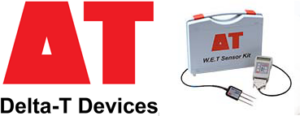
WET-2 Sensor – Measures moisture and nutrient content in the root zone
____________________________________________________________
- Accurate soil water content, pore EC, and temperature
- Minimal soil disturbance
- Comprehensive set of calibrations for soils and substrates
- Available in kit form with instant readout meter and case
The Delta‐T Devices WET-2 Sensor has crucial applications in soil science research and precision horticulture, and is usable in both soils and growing substrates.
It is exceptional in its ability to accurately measure pore water conductivity (ECp) – the EC of the water that is available to the plant. More information on the WET-2 Sensor
If you are interested to promote your product or book, event, job call in our Alert, please send an email to .


IUSS Alerts are e-mailed to more than 2,900 individual subscribers and 80 national soil science societies globally. Please forward the IUSS Alerts to your friends and colleagues. Send information for IUSS Alerts to iuss@umweltbundesamt.at
If you would like to receive the monthly IUSS Alert by email, please subscribe here https://www.iuss.org/toolbox/iuss-alert-registration/
The IUSS is on Twitter, LinkedIn , Facebook and Youtube
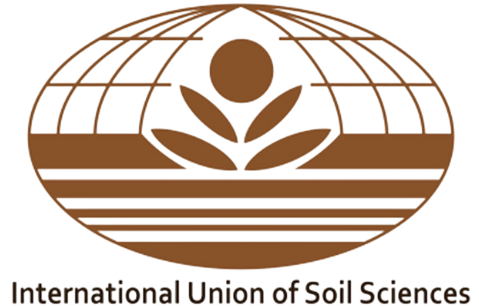

You must be logged in to post a comment.